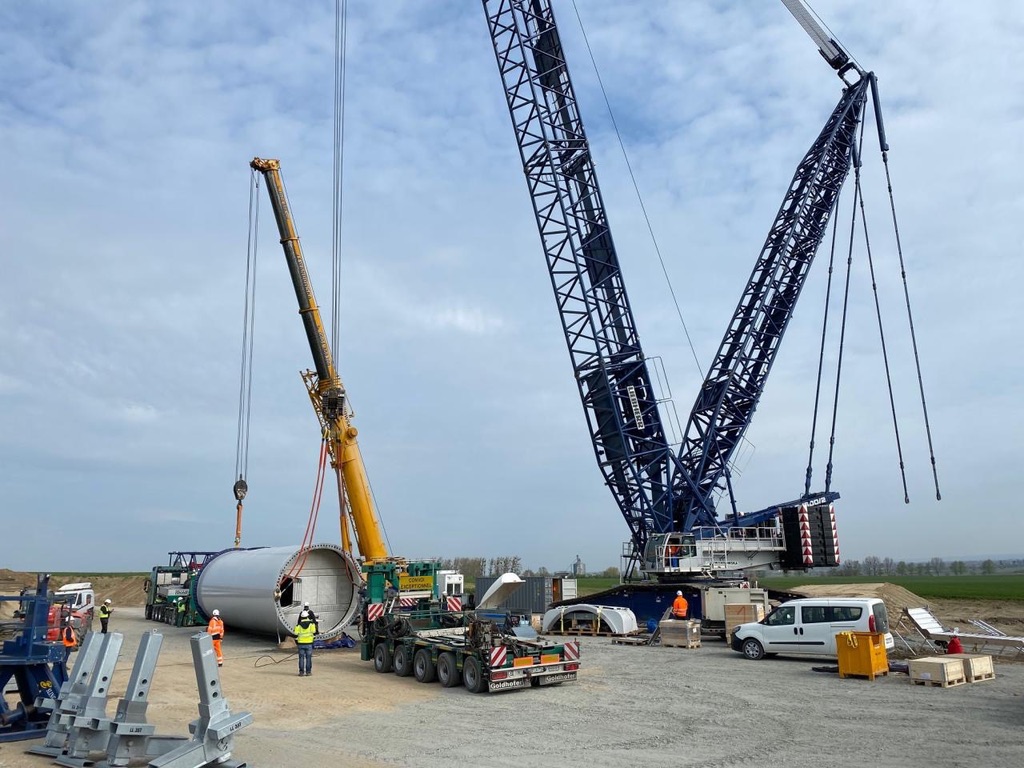Self-Propelled Cranes, Portable Cranes, and Transportable Cranes
- Training tailored to client's needs
- Training at the client's location
- Open training at our location - if you have few employees, join us!
Self-Propelled Cranes, Portable Cranes, and Transportable Cranes

In ERGON, we have been conducting comprehensive training courses for obtaining UDT (Office of Technical Inspection) and TDT (Technical Supervision Authority) qualifications for many years. Our training programs are based on the knowledge and years of experience of our instructors. We offer courses for operators and maintenance personnel for all types of cranes. Our training programs are divided into a theoretical part, which can be conducted remotely, and a practical part on the training ground. Training can also be conducted at the customer's location.
When you choose our training, you:
- Gain professional preparation for the exam under the supervision of experienced instructors.
- Can complete the theoretical part remotely.
- Acquire practical skills on the training ground.
- Are ready to start working immediately.
UDT qualifications for operating self-propelled cranes are valid for 5 years, after which they need to be renewed. We provide training for maintenance qualifications for devices from various manufacturers, including Palfinger, HMF, Hiab, MKG, Fassi, Befard, Bonfiglioli, and more.
Training Program - Self-Propelled Crane Operator
The program is designed according to UDT guidelines and includes:- Initial information about cranes.
- Crane qualifications.
- Technical parameters of devices.
- Types of safety measures.
- Types of drives and their operation.
- Handling necessary documentation.
- Working in compliance with occupational health and safety regulations.
- Practical exercises on the training ground.
Training Program - Self-Propelled Crane Maintenance
- Preparation of technical documentation.
- Crane structure and types.
- Duties and authorizations of a crane maintenance technician.
- Most common faults and repair methods.
- Safety rules during work.
- Proper operation.
- Creating a maintenance plan.
- Practical exercises with cranes.
The maintenance technician course also covers qualifications for stationary cranes, hoists, and general-purpose winches.
Requirements for enrolling in the course:- Minimum age of 18.
- A positive medical opinion for working as a crane maintenance technician or operator.
- At least basic education.
- A category B or C driver's license, depending on the type of chassis (for crane operators).
What are Self-Propelled Cranes?
A self-propelled crane is a hoisting device mounted on a specially reinforced chassis of a truck or a self-propelled chassis. This device is powered by one or two engines, with one dedicated solely to driving. The crane consists of winches and an extendable boom that allows for lifting, lowering, and moving various loads.
Self-Propelled Cranes have two operating modes:- Transport mode.
- Lifting mode, in which the chassis is lifted on extendable supports, known as outriggers, to ensure vehicle stability.
Applications of Self-Propelled Cranes:
- Installation of industrial facilities.
- Transport and handling operations in factories, ports, warehouses, and transportation hubs.
Types of Self-Propelled Cranes Based on Chassis:
- Road-terrain cranes.
- Truck-mounted cranes.
- Off-road wheeled cranes.
- Crawler cranes.
Types of Self-Propelled Cranes Based on Drive:
- Diesel-mechanical.
- Diesel-electric.
- Diesel-hydraulic.
Types of UDT Cranes:
- Self-propelled.
- Stationary.
- Mobile, portable.
- Tower.
- Railway.
- Track.
- Deck.
- Floating.
We also provide training for handling and maintaining other UDT-regulated devices, including:
- Winches.
- Hoists.
- Lifts.
- Cranes on rails.
- Lifting platforms.
- Position correctors.
- Cable railways.
- Ship lifts.
- Devices for people with disabilities.
- Portable tanks.
- WDT devices.
- Tourist-sports lifts.
- Stationary, portable, mast, and hanging movable platforms.
We invite you to our training!

